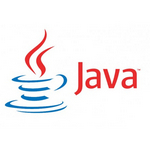Notepad++ 无法直接运行 Java 代码,需通过安装 JDK、Java 插件并执行以下步骤完成:1. 编写 Java 代码;2. 编译代码(javac);3. 运行代码(java)。

如何在 Notepad++ 中运行 Java 代码
Notepad++ 是一种文本编辑器,本身无法运行 Java 代码。但是,您可以通过以下步骤在 Notepad++ 中运行 Java 代码:
第 1 步:安装 Java 开发工具包 (JDK)
第 2 步:安装 Java 插件
立即学习“Java免费学习笔记(深入)”;
第 3 步:编写 Java 代码
第 4 步:编译 Java 代码
javac $(FULL_CURRENT_PATH)
第 5 步:运行 Java 代码
java $(NAME_WITHOUT_EXTENSION)
提示:
以上就是notepad++如何运行java代码的详细内容,更多请关注php中文网其它相关文章!

java怎么学习?java怎么入门?java在哪学?java怎么学才快?不用担心,这里为大家提供了java速学教程(入门到精通),有需要的小伙伴保存下载就能学习啦!

Copyright 2014-2025 https://www.php.cn/ All Rights Reserved | php.cn | 湘ICP备2023035733号